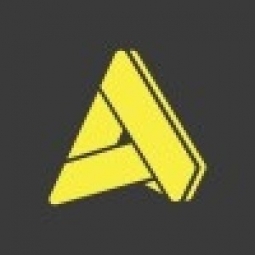公司规模
Large Corporate
地区
- America
国家
- United States
产品
- Factory MES
技术栈
- Manufacturing Executions System
实施规模
- Enterprise-wide Deployment
影响指标
- Productivity Improvements
- Cost Savings
技术
- 功能应用 - 制造执行系统 (MES)
适用行业
- 食品与饮料
适用功能
- 离散制造
用例
- 自动化制造系统
服务
- 系统集成
关于客户
Lakeside Foods 是一家私营自有品牌食品加工商,总部位于威斯康星州马尼托瓦克。该公司在威斯康星州、明尼苏达州和俄亥俄州经营着 15 家工厂和 8 个配送中心。尽管面临挑战,Lakeside Foods 每年的准时发货率始终超过 99%。该公司致力于保持行业领先地位,并一直在寻找改善运营和效率的方法。作为这一承诺的一部分,Lakeside Foods 决定投资制造执行系统来帮助提高其绩效。
挑战
Lakeside Foods 是一家私营自有品牌食品加工企业,由于原材料成本不断上涨和竞争压力不断加大,该公司在保持行业领先地位方面面临挑战。该公司认为,高机械停机时间和手动质量保证流程是提高绩效的障碍。此外,Lakeside 缺乏可操作的情报,这阻碍了工厂人员实时识别生产线问题并采取适当的措施。这种情况对公司的效率和生产力不利,显然需要一种解决方案来克服这些挑战。
解决方案
为了应对挑战,Lakeside Foods 投资了工厂 MES,这是一种专为流程制造商设计的制造执行系统。该系统已在公司所有生产线上实施。工厂 MES 系统旨在提供实时情报,使员工能够采取行动,并提高积极性和责任感。它还旨在改进生产调度流程并提高劳动力利用率、OEE 和产量。该系统的实施是 Lakeside Foods 致力于改善运营并保持行业领先地位的重要一步。
运营影响
数量效益

Case Study missing?
Start adding your own!
Register with your work email and create a new case study profile for your business.
相关案例.

Case Study
The Kellogg Company
Kellogg keeps a close eye on its trade spend, analyzing large volumes of data and running complex simulations to predict which promotional activities will be the most effective. Kellogg needed to decrease the trade spend but its traditional relational database on premises could not keep up with the pace of demand.

Case Study
HEINEKEN Uses the Cloud to Reach 10.5 Million Consumers
For 2012 campaign, the Bond promotion, it planned to launch the campaign at the same time everywhere on the planet. That created unprecedented challenges for HEINEKEN—nowhere more so than in its technology operation. The primary digital content for the campaign was a 100-megabyte movie that had to play flawlessly for millions of viewers worldwide. After all, Bond never fails. No one was going to tolerate a technology failure that might bruise his brand.Previously, HEINEKEN had supported digital media at its outsourced datacenter. But that datacenter lacked the computing resources HEINEKEN needed, and building them—especially to support peak traffic that would total millions of simultaneous hits—would have been both time-consuming and expensive. Nor would it have provided the geographic reach that HEINEKEN needed to minimize latency worldwide.

Case Study
Energy Management System at Sugar Industry
The company wanted to use the information from the system to claim under the renewable energy certificate scheme. The benefit to the company under the renewable energy certificates is Rs 75 million a year. To enable the above, an end-to-end solution for load monitoring, consumption monitoring, online data monitoring, automatic meter data acquisition which can be exported to SAP and other applications is required.

Case Study
Coca Cola Swaziland Conco Case Study
Coco Cola Swaziland, South Africa would like to find a solution that would enable the following results: - Reduce energy consumption by 20% in one year. - Formulate a series of strategic initiatives that would enlist the commitment of corporate management and create employee awareness while helping meet departmental targets and investing in tools that assist with energy management. - Formulate a series of tactical initiatives that would optimize energy usage on the shop floor. These would include charging forklifts and running cold rooms only during off-peak periods, running the dust extractors only during working hours and basing lights and air-conditioning on someone’s presence. - Increase visibility into the factory and other processes. - Enable limited, non-intrusive control functions for certain processes.

Case Study
Temperature Monitoring for Restaurant Food Storage
When it came to implementing a solution, Mr. Nesbitt had an idea of what functionality that he wanted. Although not mandated by Health Canada, Mr. Nesbitt wanted to ensure quality control issues met the highest possible standards as part of his commitment to top-of-class food services. This wish list included an easy-to use temperature-monitoring system that could provide a visible display of the temperatures of all of his refrigerators and freezers, including historical information so that he could review the performance of his equipment. It also had to provide alert notification (but email alerts and SMS text message alerts) to alert key staff in the event that a cooling system was exceeding pre-set warning limits.

Case Study
Coca-Cola Refreshments, U.S.
Coca-Cola Refreshments owns and manages Coca-Cola branded refrigerators in retail establishments. Legacy systems were used to locate equipment information by logging onto multiple servers which took up to 8 hours to update information on 30-40 units. The company had no overall visibility into equipment status or maintenance history.



